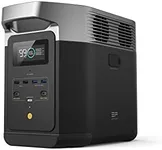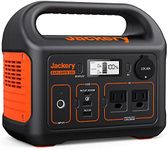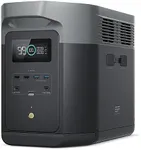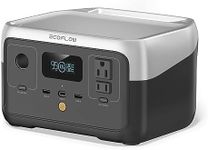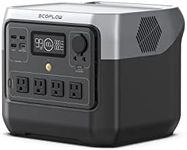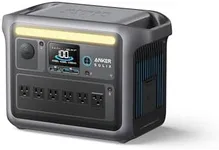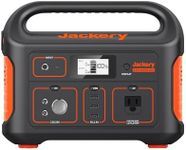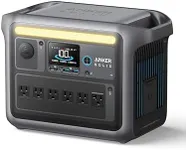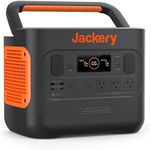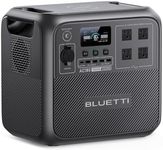Buying Guide for the Best Portable Power Station
Choosing a portable power station can be a great way to ensure you have reliable electricity for camping, emergencies, or outdoor work. The right model for you depends on how much power you need, how portable you want it to be, and what devices you plan to run. Understanding the main features and specifications will help you make a smart choice that fits your lifestyle and needs.Battery Capacity (Wh or mAh)Battery capacity tells you how much energy the power station can store, usually measured in watt-hours (Wh) or milliamp-hours (mAh). This is important because it determines how long you can run your devices before needing to recharge the station. Lower capacities (under 300Wh) are good for charging phones and small gadgets for a day or two, while mid-range capacities (300-700Wh) can handle laptops, small appliances, or several devices at once. High capacities (over 700Wh) are best for running larger devices or for longer periods, like powering a mini-fridge or multiple days off-grid. Think about what you want to power and for how long, then choose a capacity that matches those needs.
Output Ports and TypesOutput ports are the connections you use to plug in your devices, such as USB, AC outlets, or DC carports. The types and number of ports matter because they determine what you can charge and how many devices you can use at once. If you mostly need to charge phones and tablets, look for plenty of USB ports. For laptops or small appliances, make sure there are AC outlets. Some stations also have carports for 12V devices. Consider the devices you plan to use and make sure the power station has the right ports in the right quantity.
Power Output (Wattage)Power output, measured in watts (W), tells you the maximum amount of power the station can deliver at once. This is important because if your device needs more power than the station can provide, it won’t work. Lower wattages (under 200W) are fine for phones and small electronics, mid-range (200-500W) can handle laptops and some small appliances, and higher wattages (over 500W) are needed for things like power tools or mini-fridges. Check the wattage requirements of your devices and pick a power station that can handle your highest-need item.
Recharge OptionsRecharge options refer to how you can refill the power station’s battery, such as wall outlets, car chargers, or solar panels. This matters because it affects how and where you can recharge. Some stations recharge quickly from a wall outlet, while others can be topped up with solar panels for off-grid use. If you plan to use the station outdoors or during power outages, having multiple recharge options, especially solar, can be very helpful. Think about where you’ll use the station most and choose one with recharge methods that fit your situation.
Portability (Weight and Size)Portability is about how easy it is to carry and move the power station, which depends on its weight and size. Smaller, lighter models are easier to take camping or move around the house, but they usually have less capacity. Larger models offer more power but can be heavy and bulky. If you need something for travel or outdoor activities, look for a compact and lightweight option. For home backup or car camping, a heavier model might be fine. Match the size and weight to how you plan to use and transport the station.
Display and ControlsThe display and controls help you monitor and manage the power station. A good display shows battery level, input/output wattage, and sometimes estimated run time. Simple, clear controls make it easy to turn ports on or off and check status. If you want to keep track of your power usage or need to manage multiple devices, a clear display and intuitive controls are very helpful. Choose a model with a display and controls that you find easy to understand and use.
Safety FeaturesSafety features protect both you and your devices from problems like overcharging, overheating, or short circuits. Common features include temperature control, surge protection, and automatic shutoff. These are important for peace of mind, especially if you’ll be leaving devices plugged in or using the station in different environments. Look for a power station with built-in safety protections to ensure reliable and safe operation.
